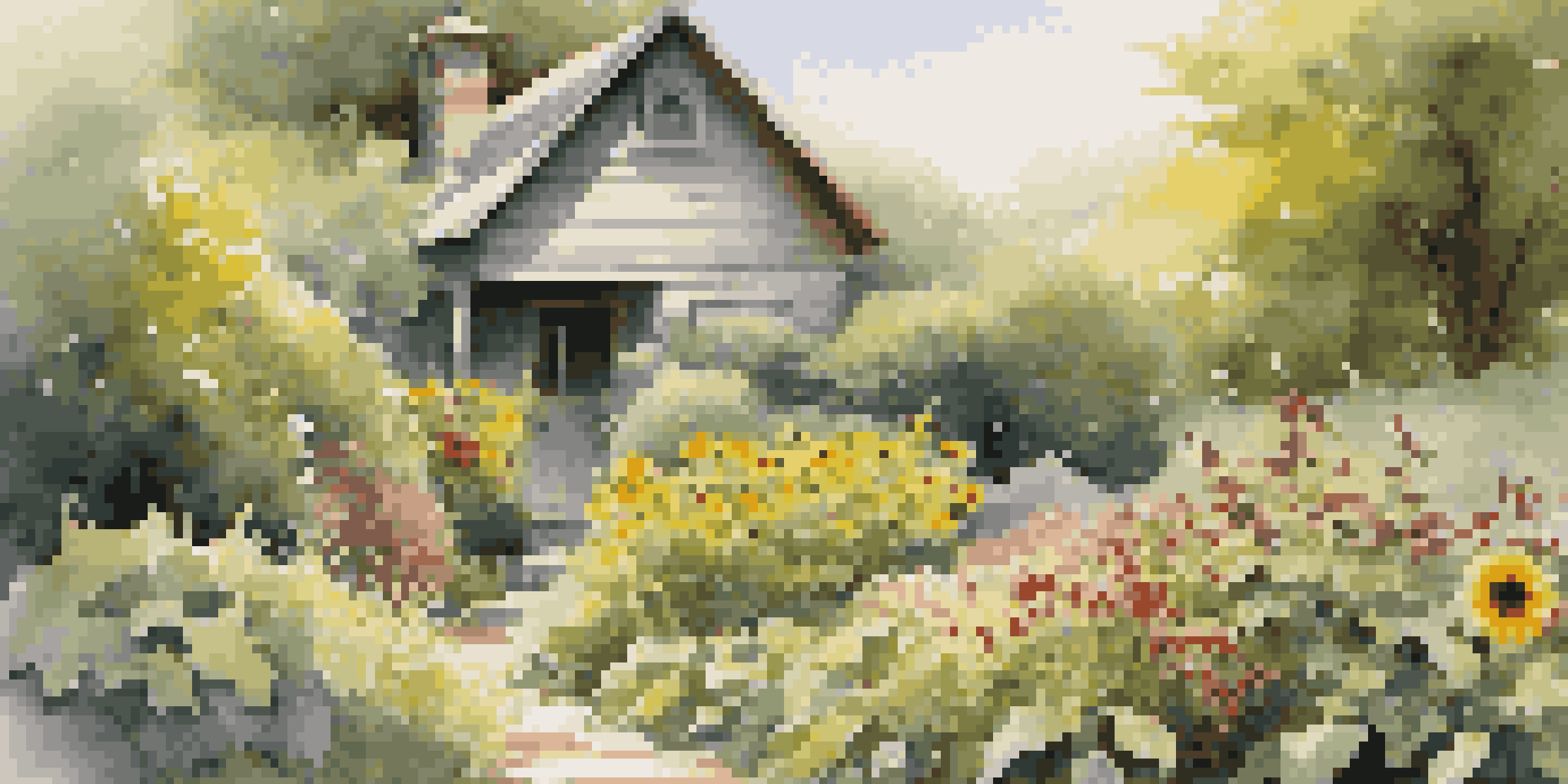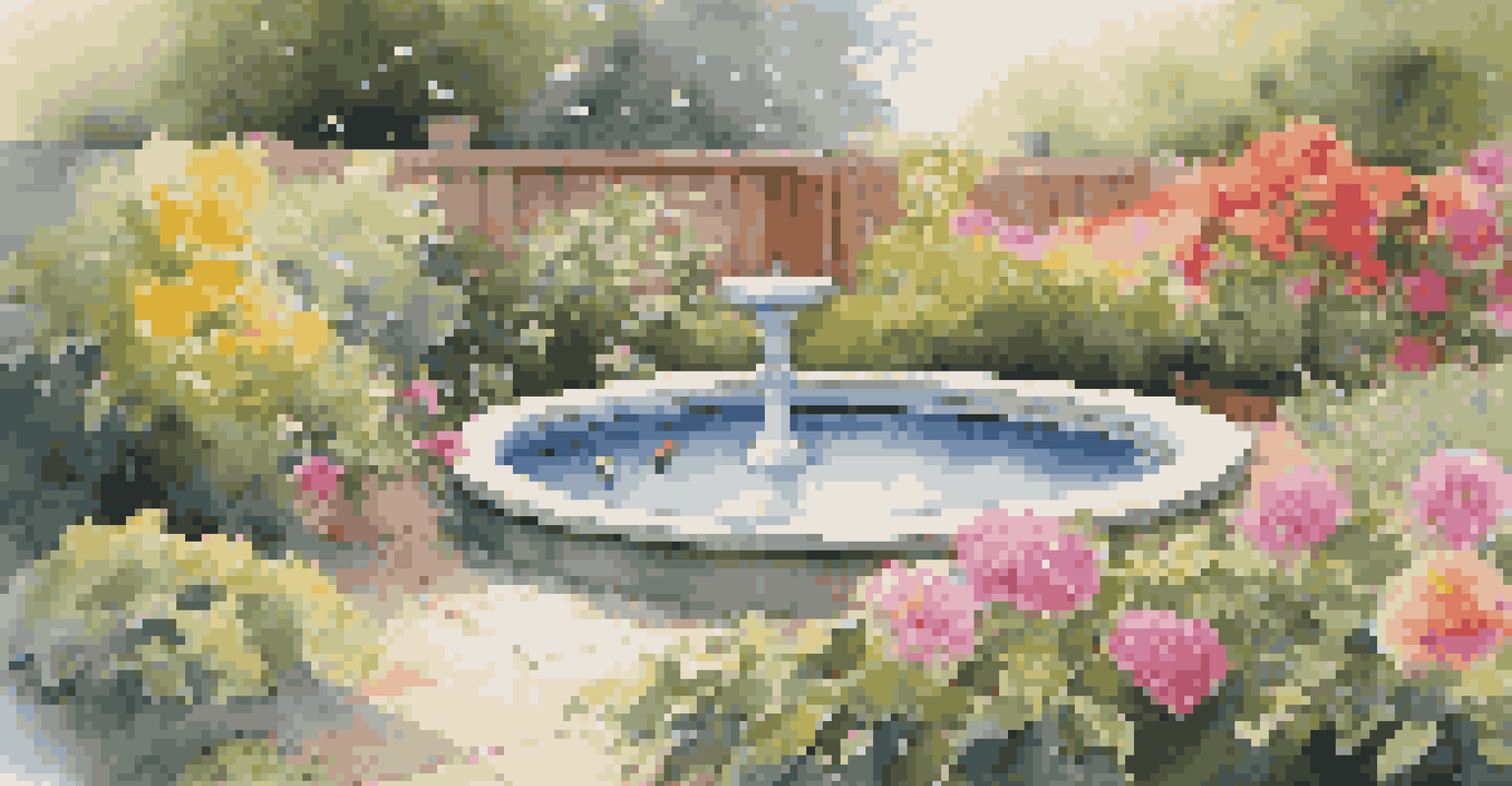Birdhouse Landscaping: Designing a Bird-Friendly Garden

Understanding the Importance of Birdhouses in Landscaping
Birdhouses play a crucial role in creating a welcoming environment for birds. Not only do they provide shelter, but they also encourage nesting and breeding in your garden. By incorporating birdhouses into your landscaping, you can help support local bird populations and biodiversity.
Birds are indicators of the environment. If they are in trouble, we know we'll soon be in trouble.
When you think about attracting birds, consider the different species that might visit your garden. Each bird has its own preferences for shelter and food, so understanding these needs will help you choose the right birdhouses. For example, bluebirds love open spaces, while wrens prefer more secluded spots.
In addition to aesthetics, birdhouses can enhance your garden's ecological balance. By attracting birds, you can naturally control pests, as many bird species feed on insects. This creates a harmonious environment where both your garden and the birds thrive.
Choosing the Right Location for Birdhouses
The location of your birdhouses is key to attracting feathered friends. Ideally, birdhouses should be placed in quiet areas, away from human activity and predators. Look for spots that provide natural cover, such as shrubs or trees, which can give birds a sense of security.

Consider the direction of the sun as well. Placing birdhouses where they receive morning sunlight can help keep the interior warm during cooler months. However, too much direct sunlight during the hottest part of the day can make it uncomfortable for nesting birds.
Birdhouses Enhance Biodiversity
Incorporating birdhouses into your garden supports local bird populations and promotes ecological balance.
Lastly, ensure that the birdhouses are at the right height and distance from other structures. Most small birds prefer their homes to be 5 to 10 feet off the ground. This helps them feel safe while also making the birdhouses accessible for cleaning and monitoring.
Selecting the Right Materials for Birdhouses
When building or buying a birdhouse, the materials you choose matter. Opt for untreated wood, such as cedar or pine, which provides insulation and breathability. Avoid pressure-treated lumber, as the chemicals can be harmful to birds.
The best way to attract birds to your garden is to provide a habitat that meets their needs.
Additionally, consider the design of the birdhouse. It should have proper drainage holes and ventilation to ensure a comfortable environment for the birds. A well-constructed birdhouse will not only attract birds but also keep them safe from the elements.
If you're not into DIY, there are plenty of pre-made options available. Just be sure to check that they meet the necessary specifications for the birds you wish to attract. Look for reputable brands that prioritize both functionality and bird safety.
Creating a Diverse Habitat with Native Plants
To make your garden truly bird-friendly, incorporate native plants. These plants not only provide food and shelter for birds but also help maintain the local ecosystem. Native flowers, shrubs, and trees attract insects, which are a vital food source for many bird species.
Consider planting a variety of flora that blooms at different times throughout the year. This ensures a continuous supply of seeds and berries, keeping your feathered visitors well-fed. For example, sunflowers and coneflowers are excellent choices for summer, while holly and serviceberry are perfect for winter foraging.
Optimal Location Matters
Choosing the right location for birdhouses, considering factors like sunlight and height, is crucial for attracting birds.
By creating a diverse habitat, you’ll encourage a wider range of bird species to visit your garden. This, in turn, creates a lively and dynamic environment that can be enjoyed by all who visit, including you and your family.
Providing Food Sources for Birds
In addition to birdhouses and native plants, offering food can significantly enhance your garden's appeal to birds. Consider setting up bird feeders with a variety of seeds, such as sunflower seeds, thistle, or suet. Different species have different preferences, so a mix can attract a wider range.
Don’t forget about providing natural food sources as well. Berry-producing plants, seed-producing flowers, and even a small water feature can keep birds coming back to your garden. Water is especially important; a shallow birdbath can be a refreshing oasis for them.
Regularly maintaining your feeders and cleaning your birdbath will ensure that your garden remains a safe and inviting place for birds. By taking these extra steps, you can create a thriving ecosystem right in your backyard.
Creating Safe Spaces for Birds
Safety is paramount for attracting birds to your garden. To provide a secure environment, avoid using pesticides and herbicides, as these chemicals can harm birds directly or indirectly through their food sources. Instead, consider organic gardening techniques that promote health without harmful side effects.
Additionally, think about the layout of your garden. Create natural barriers with plants to protect birds from predators. Dense shrubs can serve as hiding spots, allowing birds to escape if needed while they forage or nest.
Native Plants Support Birds
Planting native flora in your garden provides essential food and shelter, creating a thriving habitat for various bird species.
Lastly, ensure that any water features are shallow and have places for birds to perch. This helps them feel safe while they hydrate or bathe, making your garden a sanctuary for all types of birds.
Enjoying the Benefits of a Bird-Friendly Garden
Designing a bird-friendly garden is not only beneficial for birds but also for you as a gardener. The presence of birds can enhance the beauty of your space while providing natural pest control. Watching birds flit about your garden offers a calming, joyful experience that connects you to nature.
Moreover, a thriving bird population can indicate a healthy ecosystem in your garden. As you observe different species, you'll gain insights into the biodiversity of your area, fostering a deeper appreciation for your local environment.

Creating a bird-friendly garden can also be a fun family activity. Involve your kids in planting, building birdhouses, and observing the birds that come to visit. It’s an excellent opportunity to teach them about nature and the importance of conservation.